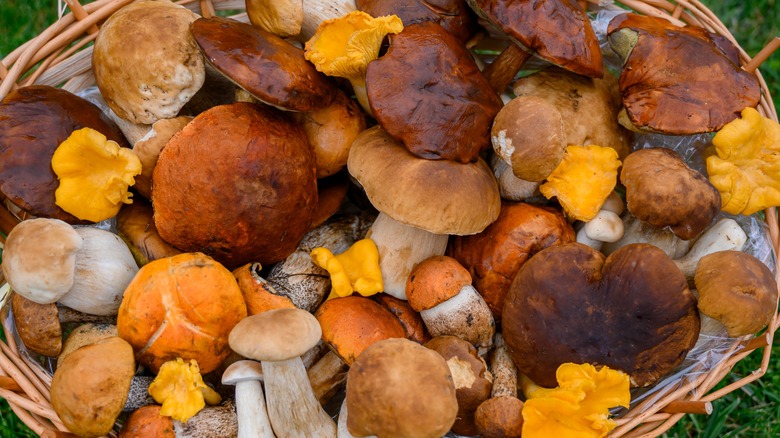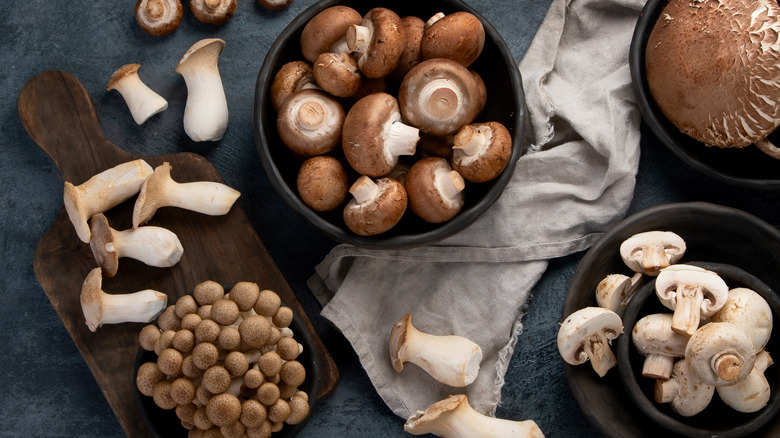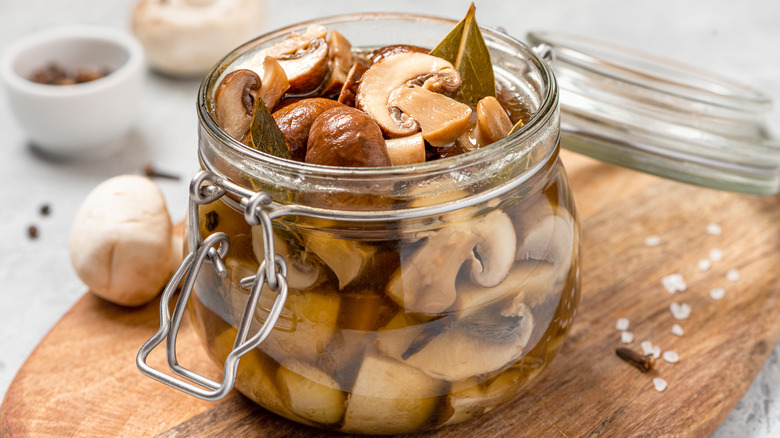The Reason You Should Save Your Mushroom Stems
We may receive a commission on purchases made from links.
Mushrooms are many things to many people. To some, they are a slimy, rubbery fungus that should remain on the forest floor or between the cracks in the sidewalk. To others, they are the perfect, earthy addition to a wood-fired pizza or an excellent meatless substitute for a vegetarian dish.
Regardless of which end of the scale you fall on, it is safe to say that humans have an extensive history of foraging and consuming mushrooms. For example, according to Integrative Medicine, hoof fungus was used as a topical healer for its anti-inflammatory properties in ancient Greece. While these cellular benefits are still being reaped, they are now obtained through modern and unique forms, like mushroom coffee.
But with thousands of edible mushrooms to choose from, per a study in Comprehensive Reviews of Food Science and Food Safety, it can be difficult to decipher which type and part of the fungus to incorporate into our meals. Recipes often request that mushroom stalks be removed from their caps, but rarely do they explain why. If these stems have the same nutritional value and taste as their caps, shouldn't we utilize them, too?
Fiber gives mushroom stems a meaty texture and nutritional value
Adding a handful of mushrooms to your daily diet, stems and all, can significantly aid in protecting your immune system by boosting it with nutrients like selenium, vitamin D, and vitamin B6, says UCLA Health. And according to the Harvard School of Public Health, mushrooms can aid in cognition and promote a healthy gut through certain antioxidant and prebiotic activity.
So why do we so often cut away the caps and condemn the stems? While some are less common in recipes due to their hardy skin and bitter taste, other stems are coveted for their savoriness, per GroCycle. As with the black trumpet and king oyster mushrooms, these stems are at least as nutritious as the rest of the mushroom but also offer an ample meaty bite: They're generally higher in fiber than caps, as highlighted in the Journal of Future Foods, and it's this very fiber that gives them the slightly different texture that causes some to avoid them but is so coveted by others.
Some of the most commonly store-bought fungi, like white button and cremini mushrooms, also have dense, mild-tasting stems with a hint of umami. Other stems, like shiitake, while edible, are admittedly not the most delectable and can be tough to eat. However, even though these may not work for some dishes, they are the perfect ingredient for others. You just have to know how to use them.
Mushroom stems can be a versatile hidden ingredient
Mushroom stems are a great option when you might want to save your caps for a more prominent role in the main dish. Whether sautéed with butter, roasted on the grill, or used as an earthy addition to broths and soups, mushroom stems can easily be incorporated into our daily meals. The stalk, ranging from thick to spindly, acts as a long-lasting and durable ingredient perfect for pickling in a jar, mincing into duxelles with herbs and onions, or adding as a salad dressing fiber booster with a unique feel. And if you really just want to avoid the texture of more stubborn stems altogether, cutting them finely or even pureeing them into a dip will still allow you to savor that umami flavor.
Even if you don't use them right when you use their caps, mushroom stems can be preserved and used at a later date. Instead of leaving them in their store-bought container and shoved in the back of the vegetable drawer, though, Food Network recommends removing them from their plastic prison and bundling them together with paper towels. This will absorb the excess moisture and keep the mushroom fresh and edible. Still, it is important to remove them once they have gone bad, usually after 10 days, per MasterClass.
So, rather than tossing your leftover mushroom stems and other "disposable" ingredients into the garbage or compost, reclaim and repurpose them to reap all of their natural, savory benefits.


